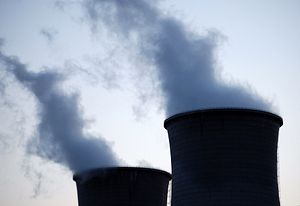Asia has been handed a massive incentive to curb emissions, with a new report estimating potential trillion-dollar economic benefits as well as better public health and environments.
Released Monday, the “Adding up the Benefits” report by the World Bank and the ClimateWorks Foundation said “climate smart” policies supporting clean transport and improving energy efficiency in appliances, buildings and factories could boost global gross domestic product (GDP) growth by from $1.8 trillion to $2.6 trillion a year by 2030.
Based on the effects of potential policy changes in Brazil, China, the European Union, India, Mexico and the United States, the report said these measures could save more than 1 million lives a year, avoid up to 1.5 million tons of crop losses and generate some 200,000 jobs, while taking the equivalent of 2 billion cars off the road.
“If fully implemented, the set of regulatory, tax and other policy actions outlined in the report could account for 30 percent of the total emissions reduction needed in 2030 to limit global warming to 2 degrees Celsius,” the report estimated.
In China, the report said the use of 70 million low-emission “clean cookstoves” could avoid an estimated 1 million plus premature deaths a year, generate $11 billion in economic benefits and create 22,000 jobs. According to the International Energy Agency, 241 million Chinese will still rely on solid fuels (coal and biomass) for cooking and heating by 2030, generating significant household air pollution.
In India, the building of 1,000 kilometers of new bus rapid transit (BRT) lanes in 20 cities at a cost of up to $4 billion would save an estimated 27,000 lives from reduced accidents and air pollution, while generating 128,000 jobs. The effect on India’s GDP would be up to a $13.5 billion increase between 2013 and 2032, the report said.
“Clean transport and energy efficiency should seem like no brainers to governments all over the world,” World Bank President Jim Yong Kim told Bloomberg News. Policies aimed at reducing global warming “make economic sense,” removing “another false argument not to take action against climate change,” he was quoted saying.
The World Bank report comes ahead of the U.N. Climate Summit planned for New York City in September, and follows moves by the European Union to push for a global agreement slashing emissions by 40 percent by 2030.
China overtook the United States as the world’s biggest emitter of carbon dioxide in 2006, although still much lower than developed nations on a per capita basis. According to European data, India was the third-largest emitter in 2012, with Japan ranked fifth and South Korea seventh.
A recent China Daily report highlighted the agricultural risks from climate change, with forecast higher temperatures, changed precipitation and more “extreme weather” expected to cut crop yields by up to 20 percent for wheat and 44 percent for rice, with the biggest effects seen in South Asia.
Yet according to the Asian Development Bank, Asia still lacks sufficient energy to meet the needs of its expanding population.
“Developing Asia is home to the majority of the world’s energy poor, more than 600 million without access to electricity and around 1.8 billion people still using fuels like firewood or charcoal to cook their food and heat their homes,” the Asian Development Bank’s Bindu Lohani said in announcing the launch of a “Sustainable Energy for All” hub for the region.
The potential for further action by Asian policymakers was highlighted Tuesday at the Australian Gas Export Outlook 2014 conference in Brisbane, Australia.
According to METI official Shinichi Kihara, the application of advanced Japanese coal thermal power generation technologies could slash U.S. emissions by 0.4 billion tons, China’s by 0.8 billion tons and India’s by 0.3 billion tons – effectively offsetting current total Japanese annual emissions of 1.3 billion tons.
Kihara noted the planned development of the world’s first floating wind power station off Fukushima, with the Japanese government also supporting the development of wind power plants elsewhere in the Tohoku region and Hokkaido.
Meanwhile, China has pledged in a joint statement with Britain to “redouble” efforts to build a global consensus for the 2015 U.N. convention on climate change in Paris.
In April, a U.N. panel said India faced losing up to 1.7 percent of GDP should the annual mean temperature rise by 1 degree Celsius compared to pre-industrialization levels, “hitting the poor the most,” while also warning of the risk of armed conflicts.
For Asian policymakers, the prospect of stronger economic growth as well as enhanced environmental credentials appears an attractive one, even while the international debate continues.

































